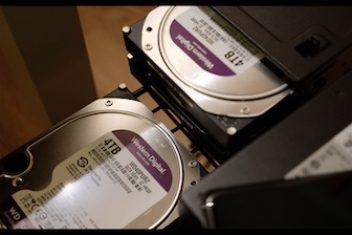In recent years, the area of health throughout the globalized world has undergone profound changes. The digital age has arrived and the medical industry has not been left behind. On the contrary, it was one of the sectors that advancedtechnologically in relation to changes in society, with new drugs, treatments and even patient care. Thus, the role played in the maintenance of medical records, for example, has been improved and used in various areas of health such as hospitals, doctors’ offices, clinics and nursing facilities.
Today, it can be said that most governments, as well as healthcare organizations, have been investing billions in funding the new electronic, digital, online consultation equipment, software and training needed to complete all this change.

Image source: nkch.com
Despite having a lot of similarity, the EMR(Electronic Medical Record) and the EHR(Electronic Health Record) have different purposes which still confuses many doctors.
Both are in high demand by medical companies that want to offer modern standards of care. These electronic systems can help prevent surgical error and other types of medical malpractice, while allowing medical workers to treat patients more quickly and effectively.
Read: How Technologies Changed The Healthcare Industry
The types of information contained in these records can help medical business leaders who are searching for the best electronic record systems to suit their needs such as the emr software development company Empweek.
What are the differences between EMR and EHR ?
In the early days of medical information, physicians were focused only on medical diagnosis and treatment, which explains why the term “Medical” was used to designate EMR. However, today, with the continual evolution of digital technology, there are some downsides when it comes to using electronic medical records, the main one being that you cannot share information about your patients outside the office.
So consider what happens if the practitioner has a medical practice and is referring a patient to see a specialist, such as a cardiologist. For your practice to be effective, you need to share information with that expert. Since the EMR is designed for internal use in a clinic only, your staff would likely need to print the patient record and mail it to you.
Both EMR and EHR are forms of electronic medical record-keeping for medical businesses, providers, and services.
Read: Most Affordable Medical Billing Software in 2023
The main difference between EMR and EHR systems is that EHR can be used across a “community” of medical service providers, where EMR is typically used within a single provider or facility system.

Image source: policymed.com
Thus, an EMR is used to perform diagnosis and treatment, but it is not designed to “walk out” outside the doctor’s office. An EHR is designed to be shared with employees or providers related to the patient’s health. And in addition, it has the ability to “move” between all available areas of a clinic or hospital, such as pharmacy, operating room or laboratory.
In the case of EMR, we are talking about the electronic medical record, a digital version of the medical record where information is stored in a local computerized system, where only the doctor and other authorized persons have access.
Read: Best medical billing software for home businesses
It is worth remembering that while the EMR is focused only on the medical and care part of the patient, the EHR is designed to completely control the entire health cycle of a patient in a clinic, in addition to serving other clinical purposes to be shared and still manage a medical facility.
For example, part of the definition of EHR revolves around “continuation of care”, making it clear that the main advantage of these systems is their portability between providers.
The EHR provides a more in-depth background or history of a patient, with more information about how different health conditions were treated by various providers.

Image source : signifyresearch.net
Despite bringing together a significant amount of data, the basic difference between the EMR and the EHR is presented in two ways:
- Amount of information about the patient’s health;
- Sharing and control of data.
While the EMR stores specific care data within a given institution, forming a partial clinical history, the EHR can gather complete information, associating care data in different locations and providing external access to the information.
Read: EHR Platform Development in 2022: The Essence, Benefits, and More
Advantages of adopting an EMR
Among the benefits of switching to an electronic medical records system include:
Safety
Safer when compared to paper records, as the professional can designate specific members of their staff to access and change records, as well as conduct audits to detect when people try to gain unauthorized access.
It’s also safer to send and share information with other professionals, as the data he shares with other teams, such as an expert for example, is saved so hackers can’t leverage patient information and commit identity theft and fraud.
Read: Top 5 Tech Healthcare Industry Trends In 2021
Efficient information storage
Important information available in case of emergencies. The electronic medical record allows patient information to be immediately presented to physicians in an emergency room, with their complete medical history and specific details about any allergies or other problems.
Easy access
With a patient portal, patients are allowed to type in their own information from the comfort of their home using a smartphone or internet-connected computer, rather than having to fill out stacks of paper forms that your staff will have to enter manually.
Access to advanced tools
An electronic medical record will include tools and many other resources to help you make better decisions and work more efficiently. For example, you can use analytics to detect emerging patterns of patient behavior, such as more comparisons, appointments in a particular population or city.
Online prescription
Electronic versions of traditional prescriptions made by signing an RX paper may be more convenient in a moment, but to convey the details in a way to share them, the electronic medical record is essential. Patients do not have to wait as the medication will be processed while they travel from the doctor’s office.
Reports
Each report that the professional needs to generate for their medical practice, such as income or finance, how many patients have not paid their bills..etc, is much easier to generate and manage, thanks to the templates you customize in the electronic medical record application.
Every modern practitioner needs some kind of electronic record to fit the computerized society. Trying to use just a paper-based system simply won’t work over time.
Tracking data over time
Allows you to more easily identify which patients are needed for preventive or common exams. Check how your patients are doing based on certain parameters, blood pressure readings or vaccinations.
Image source: usfhealthonline.com
Main advantages of adopting the EHR
Investing in an electronic health record brings to the institution a series of operational improvements, but also related to the quality and safety of patient care.
Check out some of the electronic health records benefits:
-
- Providing complete and up-to-date information about the patient at the time and place of care
- Allowing quick access to records, generating an efficient and coordinated service
- Sharing data with the internal team, external professionals, family members and with the patient;
- Aid in more effective diagnoses, reducing medical errors and offering safer care
- Improved communication and relationship between patient and physician
- Safer and more reliable prescription
- Increased privacy of patient data, due to security systems such as blockchain
- Greater legibility of documentation
- Improving billing and scheduling
- Improvement in the productivity of professionals
- Cost reduction with reduced use of materials.
Thus, the electronic health record helps in data management, especially when it comes to Big Data resources . This makes these tools indispensable when it comes to reducing costs and increasing productivity. Not to mention that they facilitate decision-making and enable greater objectivity in clinical approaches.
Conclusion
Paper records make your team dependent on accessing only the details when they are authorized, one at a time, causing practitioners to be tied to unnecessary limitations. With the electronic medical record, you can maintain security by preventing unauthorized people from seeing patients’ information.
The electronic medical record systems also contribute to better patient engagement, as it can save a lot in the clinical environment, allowing your medical team to devote more time to treatment and less time spent on keeping physical records.
So, with a patient portal enabled in your electronic record, you’ll further increase engagement as patients can access the system to check things like lab results, request an appointment, or send a message to a member of your team.
Any medical practitioner that is still relying on antiquated paper-based systems. whether to keep track of patient records or just file numbers, would need to upgrade to some form of electronic medical record in order to remain competitive in the market.
Electronic medical records have thus changed the way traditional medical records are stored and managed. But the digital way of keeping patient medical records has radically shaped the healthcare industry, allowing doctors to keep all information in one place as well as easily share records.
If you like the content, we would appreciate your support by buying us a coffee. Thank you so much for your visit and support.




